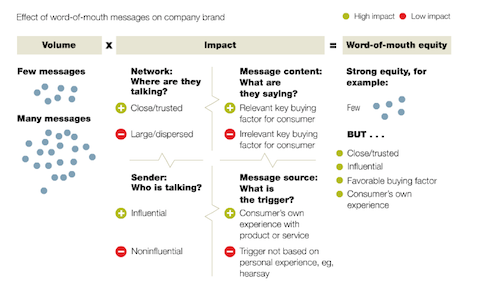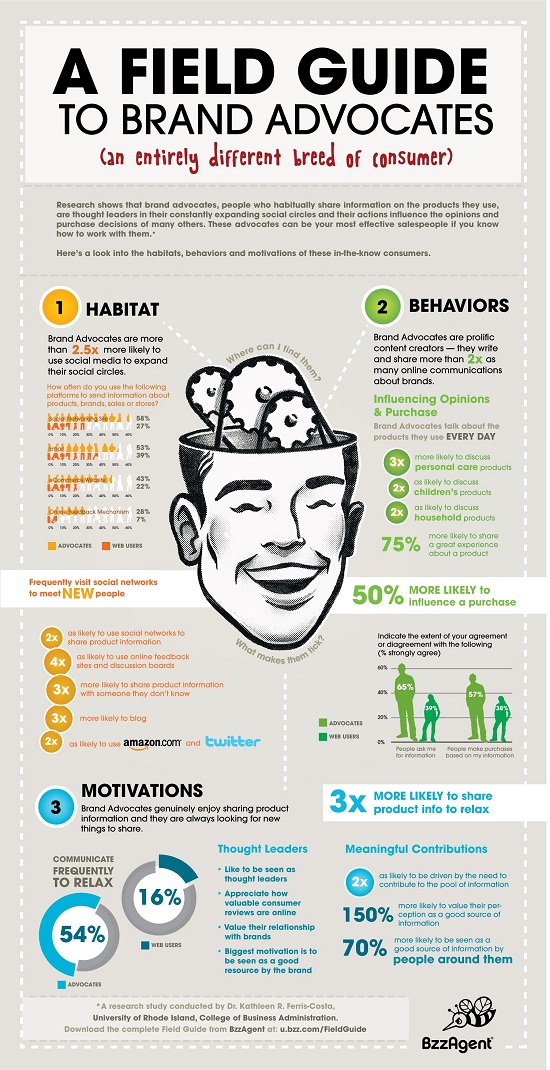By adaptive - March 5th, 2014
In traditional marketing word-of-mouth has been king, but does its power translate to social media channels?
For retailers in particular word-of-mouth (WOM) has been an effective component of their marketing armoury for decades. The power of personal recommendations has of course now taken on a completely new and far-reaching persona in the shape of social media networks.
Today, B2B organisations are also realising that WOM can be a powerful tool for their marketing activity. An astonishing 91% of B2B purchasers said that their buying decisions were influenced by WOM, making this form of engagement vital for all organisations – no matter their market sector – to get right.
In their paper ‘Shopping and Word-of-Mouth Intentions on Social Media’ Patrick Mikalef, Michail Giannakos and Adamantia Pateli state: “An equally important aspect of the shopping experience is the sharing of information that a consumer will proceed to after he has engaged in the shopping process. Referral marketing as it is also termed is an aspect that is cited by practitioners and scholars at an increasing rate.
“Additionally, users tend to share information on a product that they have seen and would be of interest to friends and peers, a typical action of post-browsing. Being familiar with a product and aware of recent product trends also leads to relatively high levels of WOM activity. Thus, a product browser might be considered as a socially integrated consumer. This creates new implications for marketing managers since consumers are generators of informal campaigns to their circle of acquaintances. The ease of sharing information is greatly increased through Internet technologies and especially by use of social media.”
And research from McKinsey reinforces these findings and places WOM firmly in the digital channel as one of the most important to cultivate whether in the B2C or B2B sector, and is the primary factor behind 20 to 50% of all purchasing decisions. McKinsey outlined how WOM could be understood:
Experiential
Experiential WOM is the most common and powerful form, typically accounting for 50 to 80% of WOM activity in any given product category. It results from a consumer’s direct experience with a product or service, largely when that experience deviates from what’s expected. (Consumers rarely complain about or praise a company when they receive what they expect.) Complaints when airlines lose luggage are a classic example of experiential WOM, which adversely affects brand sentiment and, ultimately, equity, reducing both receptiveness to traditional marketing and the effect of positive WOM from other sources. Positive WOM, on the other hand, can generate a tailwind for a product or service.
Consequential
Marketing activities also can trigger WOM. The most common is what we call consequential WOM, which occurs when consumers directly exposed to traditional marketing campaigns pass on messages about them or brands they publicize. The impact of those messages on consumers is often stronger than the direct effect of advertisements, because marketing campaigns that trigger positive WOM has comparatively higher campaign reach and influence. Marketers need to consider both the direct and the pass-on effects of WOM when determining the message and media mix that maximizes the return on their investments.
Intentional
A less common form of WOM is intentional—for example, when marketers use celebrity endorsements to trigger positive buzz for product launches. Few companies invest in generating intentional WOM, partly because its effects are difficult to measure and because many marketers are unsure if they can successfully execute intentional WOM campaigns. What marketers need for all three forms of WOM is a way to understand and measure its impact and financial ramifications, both good and bad.
Hubspot also looked closely at WOM and recommend that any WOM strategy should contain:
- Know your audience and develop personas that are so specific they’re bordering on the obsessive!
- Know everything there is to know about your industry, products and services.
- Build a very close social media community in the networks that resonate with your target audience.
- Identify who the influencers are in your community and in other social media spaces where you’d like to get noticed.
- Find out what influences your influencers and where.
- Don’t restrict what people can say but try and guide it instead.
The word of advocates
Social media though, has a more important role to play when WOM is considered. Social media has delivered to corporations and their brands a conduit to their consumers that has not been available before. What this has meant is that brand advocacy if nurtured correctly, can lead to high levels of positive WOM and therefore, conversion. The WOMMA's (Word of Mouth Marketing Association) Influencer Guidebook offers this advice:
- The attributes that make up an influencer and the things you should consider when deciding on yours - such as will they improve the reach and connectivity of your existing network.
- The classification of five categories of influencers - advocate, ambassador, citizen, professional occupation and celebrity.
- The inclusion of ‘key influencer’ and ‘influencee’ in the definitions of influencer marketing.
- The differentiation between ‘potential to influence’ and the practice of measuring ‘actual influence’.
- A discussion of three levels of consideration when constructing an influencer marketing program.
McKinsey concluded: “WOM equity empowers companies by allowing them to understand WOMs relative impact on brand and product performance. While marketers have always known that the impact can be significant, they may be surprised to learn just how powerful it really is.
“The flexibility of WOM equity allows us to gauge the WOM impact of companies, products, and brands regardless of the category or industry. And because it measures performance rather than the sheer volume of messages, it can be used to identify what’s driving—and hurting—WOM impact. Both insights are critical if marketers are to convert knowledge into power.”
What is clear is that most WOM still takes place offline, but increasingly the digital channel is becoming more important. The fact smartphones are now ubiquitous enables offline WOM to transfer online instantly. Brands need to develop this channel to ensure the positive sentiment that they receive is leveraged. WOM has always been a powerful and vital marketing technique. With social media, its power has been amplified.
[Image Source: FreeDigitalPhotos.net]
Next Reads
June 2014, New York
Become a social business: For superior marketing response, sharper corporate decision-making, enhanced innovation and a happier, more loyal customer
Brochure Programme

